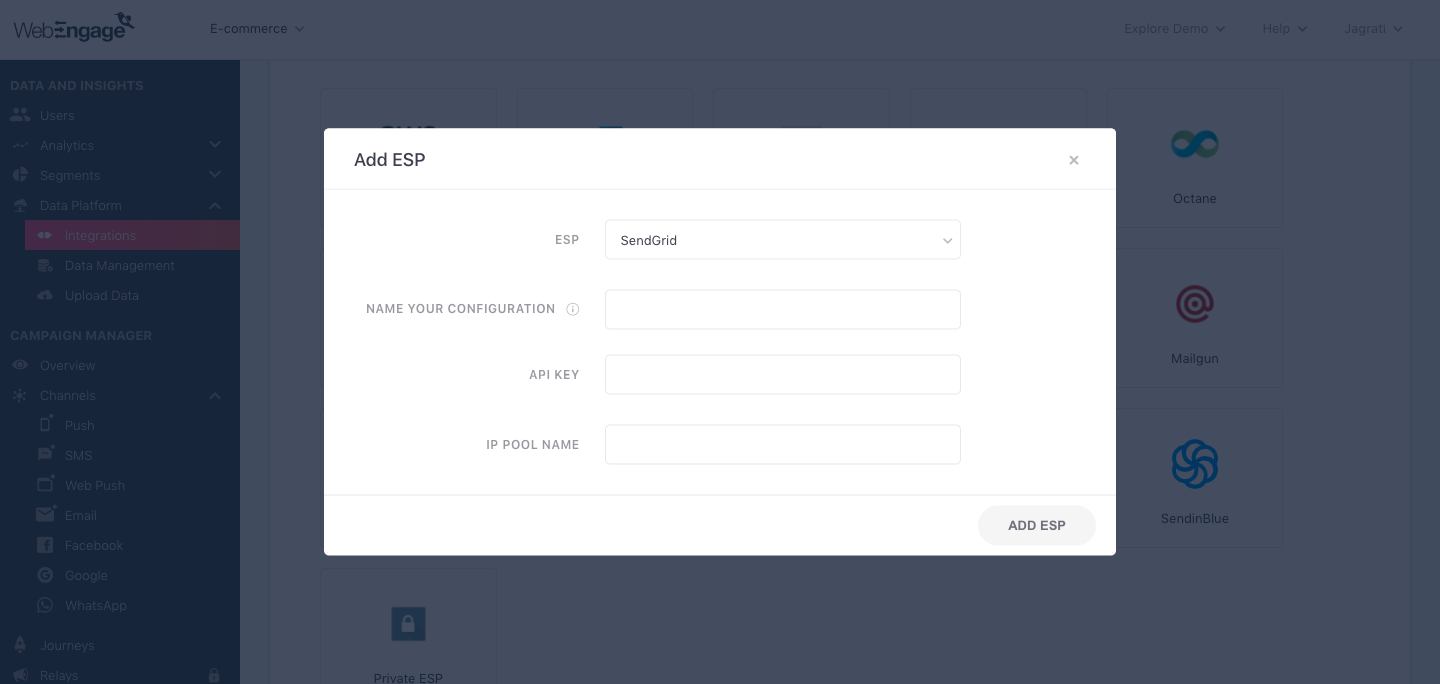SendGrid (by Twilio)
Prerequisites
Please ensure that the following settings are in place before you integrate your Sendgrid account with WebEngage:
1. From Email/Domain Verification
Please verify all the Sender IDs you'll be using for Email marketing in your Sendgrid dashboard before proceeding.
2. Create API Key & Configure Access Permissions
Once created, we highly recommend that you give WebEngage Full Access across all permission categories. If that's not feasible, and you prefer granting Restricted Access, then please ensure that Full Access is given for the following:
- Alerts
- Email activity
- Mail Send
- Mail Settings
- Stats
- Suppressions
- Tracking
- User account
Restricting access to the aforementioned aspects can cause integration failure.
3. Sending AMP Emails
WebEngage now supports the delivery of AMP Emails in collaboration with SendGrid! However, you will need to implement a few additional settings before you can start engaging your users with highly personalized AMP Emails.
Step 1: Create a Tracking Domain
While email delivery status notifications are automatically tracked for all non-AMP emails in your WebEngage dashboard, you will need to create a custom tracking domain to track user engagement for your AMP Emails. This is a one-time setup and can be configured in your SendGrid dashboard.
Step 2: Add WebEngage's Custom Cname in SendGrid Dashboard
Once you've created the custom tracking domain for your brand, you will need to add a Cname entry for sendgrid.webengage.com in your SendGrid dashboard to ensure that all the components of your AMP Email are rendered successfully for your users.
Now, let's show you how you can configure SendGrid as an ESP in your WebEngage dashboard.
Configuration

Click to enlarge
As shown above:
Step 1: Select ESP
Select Sendgrid from the List of Available ESPs. In doing so, you will be prompted by a configuration modal.
Step 2: Name your Configuration
Please add a user-friendly name that enables you to identify the right ESP for a campaign while creating it. This comes in handy especially when you have multiple accounts with the same ESP for sending different types of campaigns (Transactional/ Promotional).
For example, if you have configured a Sendgrid account for sending both transactional and promotional campaigns, then you can name the configuration:
- Sendgrid all campaigns
- Sendgrid Global
Step 3: Add API Key
Navigate to your Sendgrid dashboard to find and copy your API Key, paste it in the configuration modal.
Step 4 (Optional): Add IP Pool Name
If you're using a specific IP for email marketing, then please specify the same here. You can skip this field if no such settings have been configured in your Sendgrid dashboard.
Step 5: Add ESP
Click Add ESP, and you're good to go!
Congratulations!You've now successfully integrated Sendgrid with your WebEngage dashboard.
You can test the integration by creating a test Email campaign and sending it to a group of internal users (aka your teammates).
Please feel free to drop in a few lines at [email protected] in case you have any further queries or feedback. We're always just an email away!
Updated about 1 month ago